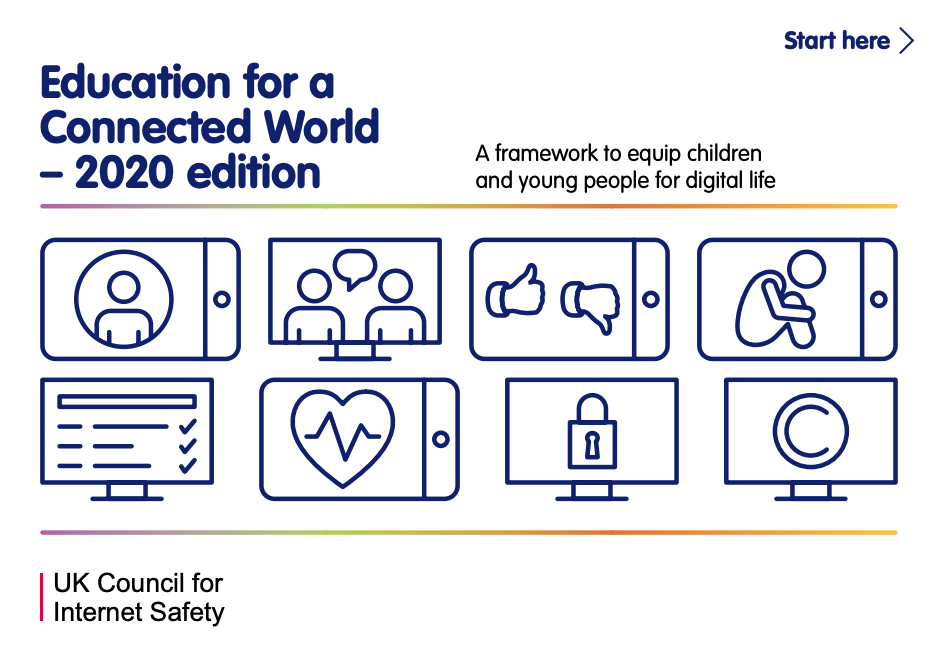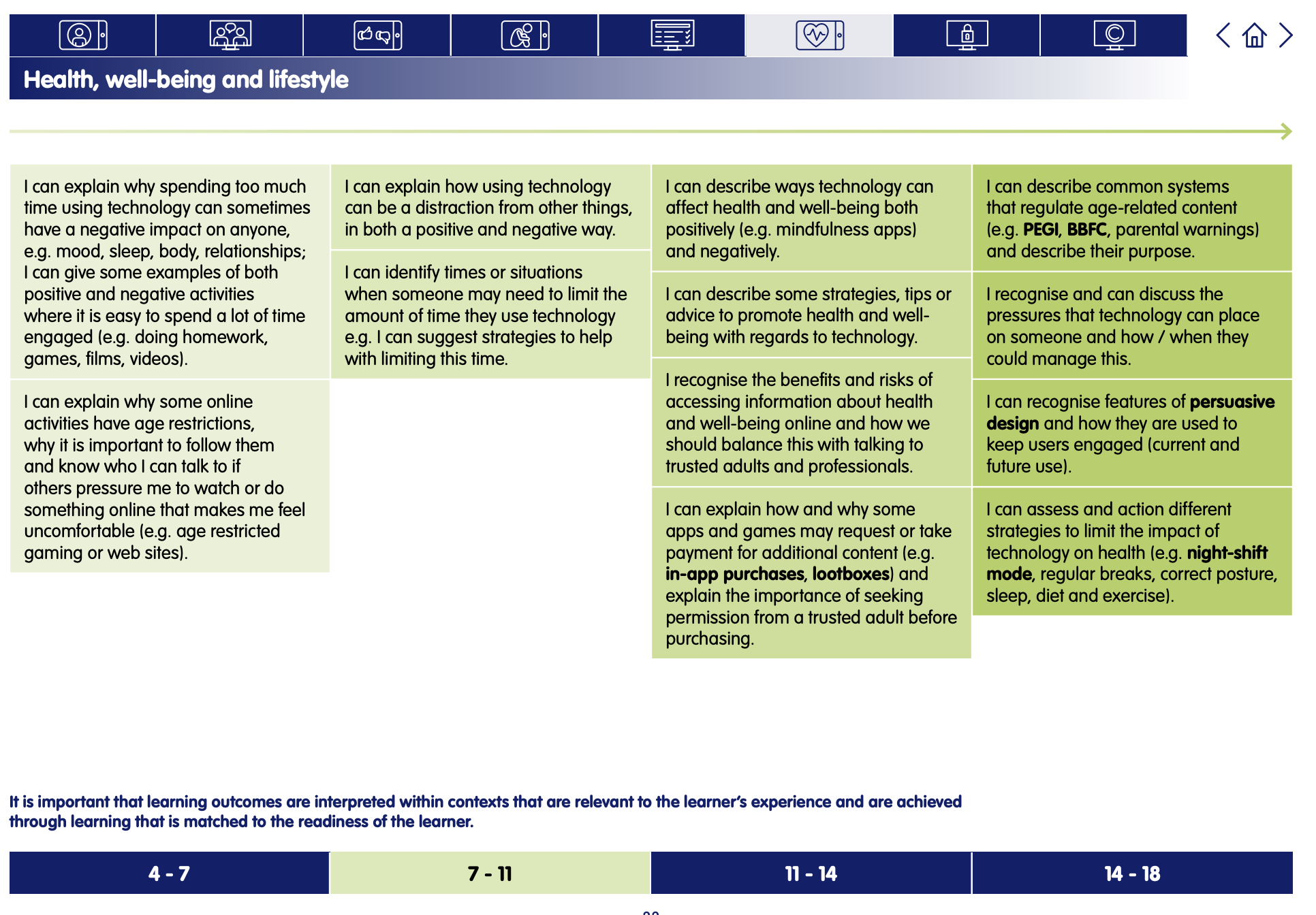My Media Choices
Digital Literacy and Online Safety (Y5) - Lesson 1
A note about this lesson

This lesson is taken from Common Sense Education’s excellent Digital Citizenship curriculum. Their resources are shared for free under A Creative Commons Attribution- NonCommercial- NoDerivatives 4.0 International License.
You can find the original resources HERE.
Objectives
- Learn the "What? When? How Much?" framework for describing their media choices.
- Use this framework and their emotional responses to evaluate how healthy different types of media choices are.
- Begin to develop their own definition of a healthy media balance.
Lesson 1 - My Media Choices
Lesson 2 - Private and Personal Information
Lesson 3 - Our Online Tracks
Lesson 4 - Keeping Games Fun and Friendly
Lesson 5 - Be a Super Digital Citizen
Lesson 6 - A Creator's Rights and Responsibilities
Links to Education for a Connected World.
This lesson from Common Sense Media's Digital Citizenship curriculum links to the following strands from the Health, well-being and lifestyle section of the Education for a Connected World framework.
Introduction - How Media Can Make Us Feel
We all make choices every day about the media we consume and create. But do kids understand what makes a media choice healthy or not? Hint: It's about more than just screen time. Use the activities in this lesson to give kids a framework for making informed media choices.
Before the lesson: Consider giving students the My Media Choices Student Handout one week ahead of time, and ask them to track their media use throughout the week as a homework assignment or for 5-10 minutes of class time each day.
As an optional activity before the lesson, have students play the Twalkers game in Digital Passport™ by Common Sense Education. This will help introduce key concepts of this lesson. To see more, check out the Digital Passport Educator Guide.
Ask: You all have probably heard the word "media" before. What do you think it means? What are some examples? Take turns sharing your idea with your partner. (Slide 4)
Invite students to share. Explain that "media" has different meanings, but for today's lesson, you'll be talking about media as all of the ways that large groups of people get and share information (TV, books, internet, newspapers, phones, etc.). It can include everything from news articles to movies to games. (Slide 5)
Say: We all make choices every day about the media we watch and use. These choices include what we watch, listen to, read, or even create online. But not all media choices are the same. In fact, different choices can make us feel very differently. (Slide 6)
Project the activity directions from Slide 7 and read them aloud.
Proceed to Slide 8 and call on a student to read the example aloud. Then ask: How would this media choice make you feel? Why do you think it would affect you that way?
Call on students to share their answers. Depending on how students respond, ask follow-up questions to prompt them to think carefully about the example:
- How do the different parts of the example -- What? When? How Much? -- affect how you feel?
- Might you feel differently about the example later on, as opposed to in the moment?
- How would your video watching impact other people, like your family and friends?
Repeat step four for each of the remaining media choice examples. (Slides 9-13)
- For Slide 11, point out that this example would probably have a big, positive impact on someone else (Grandma).
- For Slide 12, note that this example is of media creation, rather than consumption.
Explore - My Media Choices
Note: If students have already completed the My Media Choices Student Handout, skip this activity.
Say: To understand how our media choices make us feel, it helps to keep track of the media we actually consume and create. Use this tracker to list the media you've watched and used over the past week.
Pass out copies of the My Media Choices Student Handout and read the directions. Remind students that:
- They should consider all types of media: TV, streaming media, mobile phones, books, tablets, games, voice assistants (e.g., Google Home, Amazon Alexa, etc.), and so on. If students have trouble remembering, tell them it's OK to guess.
- Media use isn't just about consuming media, it's also about time spent creating media.
Allow students 10 minutes to complete their tracker.
Prompt students to share some of the more interesting or unique media choices they listed with a partner. As time allows, have volunteers share with the class.
Evaluate - Media Balance Reflection
Explain the What? When? How Much? framework by helping students think through how each part of the framework can make a media choice more (or less) healthy. (Slide 14)
Reinforce the idea that healthy media choices involve a combination of What? When? and How Much? that's unique to each person, and each media choice. Also emphasise that what feels healthy may also depend on how people's media choices affect the people around them or others online.
Distribute the Reflecting on My Media Student Handout and read the directions aloud. Allow students 10 minutes to complete the activity.
Collect the Reflecting on My Media Student Handout as students finish.
Plenary - What is Media Balance?
Show the My Media Balance video on Slide 15 and ask students:
- How are some media choices more healthy or less healthy than others?
- What is "media balance"? How might it be different for different people?
Invite students to respond, and prompt students to connect the What? When? How Much? framework to the concept media balance. Clarify that media balance means using media in a way that feels healthy and in balance with other life activities (family, friends, school, hobbies, etc.). (Slide 16)
Have students complete the Lesson Quiz. Send home the Family Activity and Family Tips.


